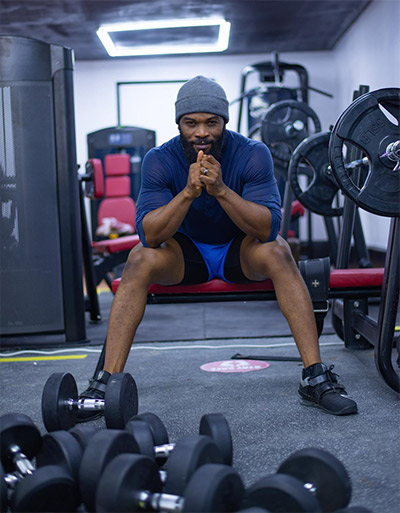
Injuries are a serious issue when it comes to exercise. They’re the fastest way to stall out your progress and make a good habit feel bad.
While improperly prepared muscles and joints are more susceptible to injury while exercising, exercise itself is also the main way that you prevent injury. Through familiarity with the movements and strengthening key tissues, you can reduce your injury risks.
Today, we’re going through some of the most important injury prevention exercises you can probably benefit from. These offer one, or a few, movements for different patterns that will help you live a healthier, happier lie as a more functionally prepared human!
Injury and Prevention
We talk about injury prevention all the time, because it’s the best way to prevent the loss of progress and even function that comes with injury. It’s a way of spending a few minutes every day, or an hour a week, preventing injuries that take weeks, months, or years off your healthspan.
It’s also a way of protecting your exercise and progress from detraining and immobility.
The prevention tactics we’re talking about today are simple: preparatory exercise to reduce the risk of common problems and weaknesses.
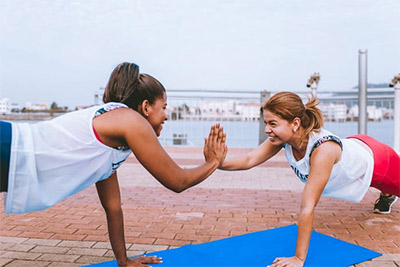
We’re talking about problems and solutions. We’re covering the main forms of weakness and poor function we see out in the general population, and what the best solutions are; 1 or 2 exercises that can offer real bang-for-your-buck in dealing with these major issues.
These aren’t going to solve every problem you could possibly have, but they’re the exercises that the general population could benefit from. If you’re dealing with any of these problems, practicing these exercises with an appropriate weight and focus on control and movement quality are going to be a short-cut to better performance and all-round fitness.
Common Weaknesses and Preventing Them
Neck Injury
Neck movement isn’t one of those areas people talk about often. It’s not got the same draw and glamour as “best exercises to build massive arms”.
What it does do, however, is prevent issues like tension headaches and risks to the posture of the shoulders. These are important for proper posture and the way you age, as well as the risk you put your shoulders at with other types of exercise.
Strength and stability around the neck come from regular forms of upper back exercise, and the average person doesn’t need to isolate the neck. Focus on things like full-range shoulder raises, reverse flyes, and stability in the upper back during overhead pressing all contribute.
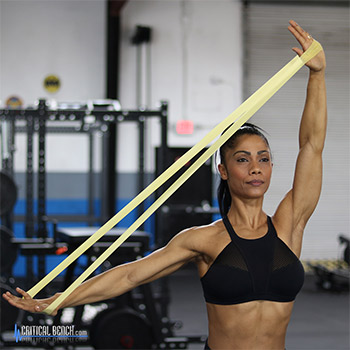
Neck Circles / Levator Scapulae Rolling
Neck circles are one of the most important and effective ways of treating these risks. They move the neck through the whole range of motion, releasing tightness and over-activity in some of the most important muscles like the lev scap and the upper traps.
Focus on getting the ear as far away from the near-side shoulder as possible. Practise this exercise as drawing the biggest possible circle with your chin, keeping your shoulders tucked down and back.
You can also grab a chair or box while sitting on it to increase the application of this exercise to the lev scap. If you haven’t got one, you can hold your arm behind your back – just make sure to switch arms halfway through a set.
Shitty Shoulders
Most people have garbage control over their shoulders leading to weakness, poor posture, and restricted movement.
We’ve talked about it before, but excessive front-demand on the shoulders is one of the major risks we associate with injury in the shoulders. These are the risks that come from inactivity, neglecting the upper back muscles, or just failing to move the shoulders through their full range.
This extends to control over the scapula region, which is tied into the control of your shoulders. Good control significantly reduces risk, while poor control puts you at huge risk.

Underhand/Normal Band Pull-Apart
Band pull-aparts are one of the best exercises that we should all be doing. They offer a way to directly train opening up the chest and strengthening the rear delts and mid-traps, the muscles that pull the shoulders back in their capsule and stabilise against the chest.
Underhand pull-aparts are also great for shifting this exercise’s focus down into the traps and they present a completely different rotation in the shoulder joint. Use both, ideally as a superset where you do both without resting, and you’ll strengthen the upper back in both crucial positions!
Lu Raises + Reverse Flyes
This is a great little superset to strengthen the whole range of the shoulder and scapula. These two exercises develop the muscles of the shoulders and upper back together, which is absolutely crucial, since they’re going to work together in any healthy movement.
The full range of “Lu” raises is one way you can develop overhead stability and healthy shoulder movement (reducing the risk of, for example, subacromial impingement). The reverse flye is great for the scapular retraction mentioned in band pull-aparts, as well as helping to find the “groove” for the overhead raise.
Face Pull
This is a perfect, “small” exercise to combine scapular retraction and external rotation. These go together well, especially because they’re the areas where most people are weak and have poor control.
They combat some of the most common shoulder posture problems that come from inactivity and “desk” posture. It opens up the chest position, building strength in the upper back and helping maintain healthy joint position/space.
You can combine these exercises in a circuit, but using at least one after every workout as a finisher can influence some serious positive change!
Shitty Elbows
Elbows aren’t a common issue for most people, though they are easily over-used in a lot of upper body exercise, manual labour, or even sports like golf.
Proper preparation for the elbow needs to work on three simple things. And we manage to practise them all at once: strength, mobility, and controlled movement through the full range.

Seated Full-Range OH Tricep Extension
This is a brilliant way of building triceps because, when performed properly, it involves a stretching motion at the absolute end-range of the triceps’ range.
This is important because it builds up more range and stretches the long head of the tricep, which crosses over the shoulder joint. This is one of the easiest ways to build up elbow health, by reducing restriction in all of the heads of the tricep, but specifically the one you’re going to have a harder time mobilising.
It also helps build control at end-range which, if you’ve read anything we’ve talked about, you know is going to be the fastest way to improve the health and mobility of your elbow and tricep.
Shitty Wrists
Wrists do a lot, and you probably neglect them. This can lead to a number of both serious and annoying problems like repetitive strain risk or impingements.
Fortunately, properly exercising them goes a long way towards maintaining their health and preventing these issues. They just need to be treated with the same concern and prep you’d put into any other joint.
Strengthening the musculature around the wrists and moving them through full range is all it takes for the average joe to drastically reduce injury risk.
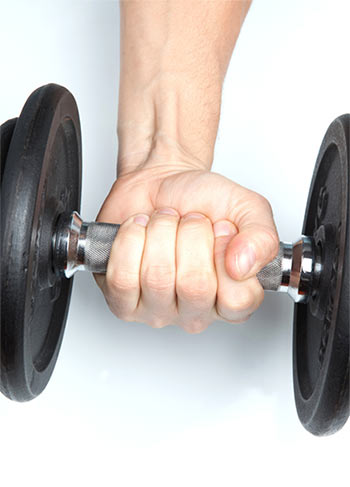
Wrist Raises
Imagine these as tiny push-ups for the wrist. They’re perfect for building strength in the forearms, which stabilise the wrist joint and help it deal with the variety of positions you put it in on a daily basis.
This is easy against a wall, since your forearm muscles aren’t going to be very strong to start with, and you can get real benefits with very little actual bodyweight on the muscle. Lean into it, standing more upright to make the exercise easier.
You can also practice this with an inverted wrist position, raising from the back of the hands, as you build strength, control, and mobility. Just don’t rush it!
Curl ‘n Twists
The combination of wrist curls and slow, controlled twists with light weights are brilliant for preparing the wrists. You need to keep your elbows “pinned” in one position, throughout, however, or you’re just going to compensate in the elbow.
This is a great little exercise you can throw in at the end of a workout, just cover 3 sets without any rest, and you’ll come out with a great forearm pump and stronger wrists.
Rest your elbow on a bench or box, if you’re struggling to isolate the elbow joint, and you can shortcut the whole exercise.
Shitty Spine
We’ve discussed the spine at length recently. What you need to know, in short, is that it’s very weird and unique in the body. It has demands and challenges that no other joint/group of joints presents.
It also has a huge muscular control and stability demand since it’s a stack of joints and it contains your spinal cord. Breaking your back or slipping a disc have some serious implications that breaking your leg just doesn’t.
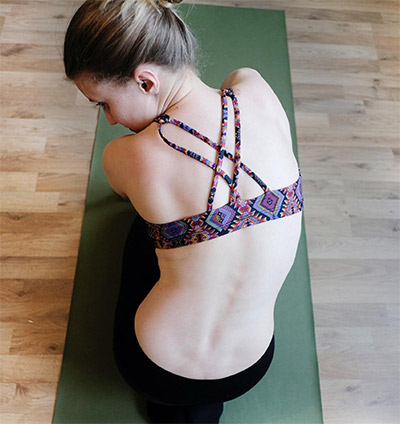
8-Point Plank
This is what a plank should be: it forces you to be active and develop the control over your core that you can half-cheat with a regular plank.
It’s a challenging variation that will force you to develop core strength and coordination. If you’re finding it easy, simply walk your elbows and knees further apart from each other. Your spine is a cable bridge, and you’re holding it in place with the muscles of the core.
Think about curling your spine against gravity and pulling your belly button into your spine. You shouldn’t be able to do this exercise for more than 20-30 seconds. If you can, shuffle out and make it harder.
Side Plank With Twist
This hits so many different muscles and movement skills that we think every program shouldn’t include it.
It helps build the abs, the obliques, and the rotational muscles of the deep core. All at once. Why would you not want to get all of those at once? It’s definitely better than using them individually and suffering through circuits of 3 different movements.
This exercise is also amazingly functional due to its integration of these 3 muscle groups and the control it requires in rotation. It’s both a stability exercise and a strength-development tool, making it one of the best uses of your time training the core.
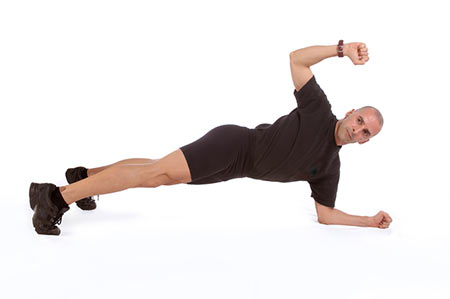
Shitty Hips
Poor hip movement rapidly runs you into the risk of lower back pain, hip problems (obviously), and then knee and ankle issues.
That’s because the hips control all of these areas, as we’ve discussed before, and weakness or poor movement exposes them to horrible loading patterns and positions. Strengthening the hips is about controlling these various functions and practicing them with both load and control in mind.
90/90 Hip Rotations
This is a simple and effective way to start building better hip mobility and control. It’s a drill we like to use for any deep knee-and-hip bending like squats or deep lunges, and a great way to prepare the hips before deadlifts, sprints, or sports.
You can use this drill as a mobility exercise in a morning/evening, you can use it to warm up for other exercise, or you can just use it as a training tool to combat your own movement restriction in supersets.
They’re a perfect solution to stiff, uncooperative hips!
Front Loaded Good Morning
We LOVE this exercise because it’s horrible! It forces you to use your core and hip hinge at the same time; a skill everyone should have. Using them together is also exactly why the hip hinge exists, and one of the most effective ways to learn to hinge without risking the health of your lower back.
The front-loading makes it challenging, forces you to learn to brace your core, and adds some weight in a way that is weird and functional. What’s not to love?
Paused RDL
The RDL is one of the best exercises for building strength and control in the hips, core, and lower back. If you’re doing it right, these 3 areas, which are so important, are going to develop rapidly and to a very high standard.
The pause, at the bottom position, is a great way of reinforcing all 3. You need to feel the stretch in the hamstrings, maintain a flat back, and make sure you’re keeping tension in front of your spine, using the core.
The lowering and the hold also give you time to think about the hinging motion, and the return to standing position should focus on the hinge. This covers just about everything we want in an exercise for the hips, hams, and back.
It’s the perfect hip hinge movement if you use the right weight, are strict with your pause, and perform the hinge pattern properly!

Shitty Knees
Knees are always loaded, they’re surrounded by important muscles, and they’re probably going through more repetitive motion than any other structure in the lower body. They’re doing a lot of work, basically.
If you don’t prepare them, and learn to use them in concert with other joints, you’re going to get injured. This doesn’t just mean snapping a tendon or causing some other catastrophic issue. It includes the long-term risk of degeneration and the risk of a total knee replacement.
Prepare your knees, they do a lot for you. You’ll miss them if you don’t take care of them properly.
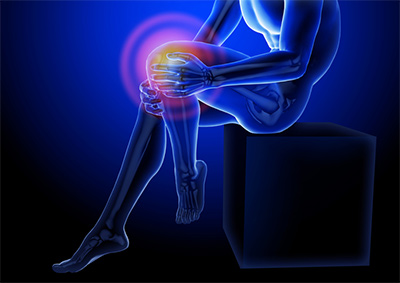
Slow-Eccentric Reverse Lunge
The slow-eccentric reverse lunge is the best beginner’s tool to improve the strength and resilience of the hip-knee-ankle complex. This movement forces you to slowly move through the range of your hip and knee with control.
This progresses naturally into the slow-eccentric step-up, with a greater range and challenge. These develop the mechanics of both lowering and pushing through the lower body. This is perfect for athletes, strength enthusiasts, or your average joe who wants to get fit and prevent knee injuries.
As with almost everything, if you want to make it even better, you front-load it with a weight in a goblet position. Make sure you don’t touch the floor. Suspend yourself just above it to build better hip and core stability.
Paused/ Slow-Pause Leg Extension and Curls
These are one of the best preparatory and preventative knee exercises around. They pair up because they’re antagonists: leg extensions condition the quads (including the quad and patellar tendon), while the curls strengthen the knee-flexion function of the hamstrings.
What makes these special? You hold the end-range and start position for 5 seconds and spend 5 seconds moving between them in both the raising and lowering portions of the movement.
This sounds easy, but rapidly becomes a great challenge in stability and control. You’re going to leave both of these exercises feeling completely refreshed in the knee, though probably also quite tired from the effort.
There’s no video for this one – you’re just going to have to practice it for yourself. Just like the normal versions, but broken down into slow, paused segments!
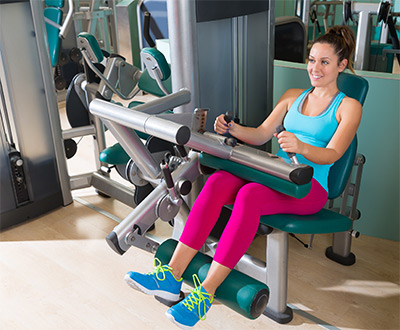
Shitty Ankles
Your calves end up taking up serious stress and they’re one of the most undertrained areas, despite being a key factor in the stability and health of your knee and ankle together.
Tightness and issues in the calves are too common, but training reduces your risk and will have your foot posture and knee health feeling much better. It doesn’t take a lot, just a bit of time and effort here and there.
They’re strong, tight muscles and they just need some moving through their full range to build some extra strength/control.

3-Position Calf Raises
This is a pretty simple and effective exercise. It does what it says on the tin: calf raises in 3 different foot positions. Toes in, neutral, and toes out.
We’d usually recommend 10-12 reps in each position, and you can slow the reps down to add more challenge. These are great because you can do them almost anywhere, almost any time.
Probably not the best for a board meeting, but you can do them while you brush your teeth in a morning and evening, while you’re waiting for the coffee machine, or while ignoring a co-worker!







